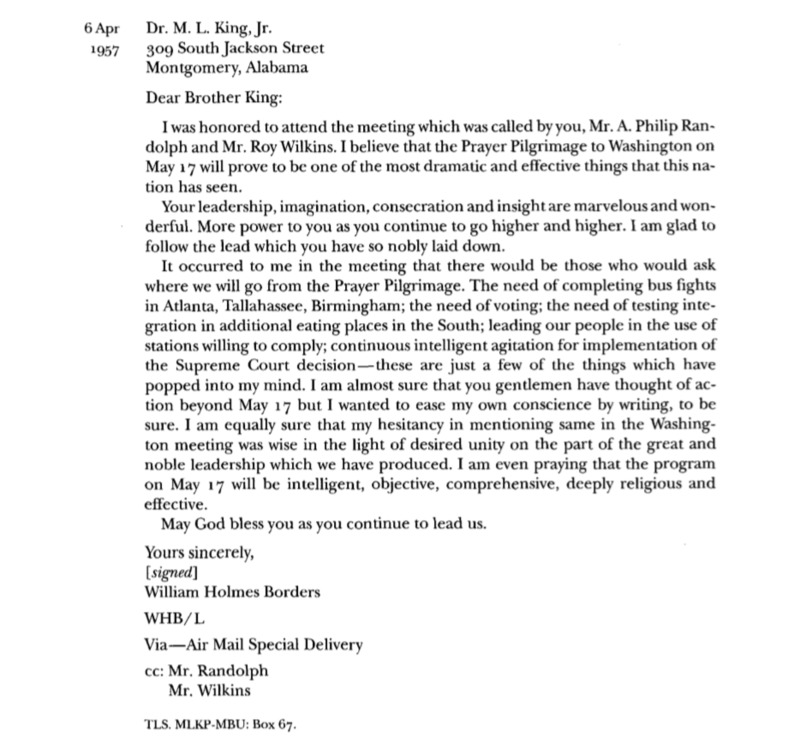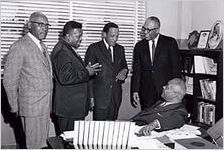Transportation Desegregation
In this letter, written to Dr. Martin Luther King Jr., Reverend William Holmes Borders of Atlanta’s Wheat Street Baptist Church praises King for his organization of an upcoming Prayer Pilgrimage to Washington (Borders 153). Borders, like King, worked to desegregate the southern United States and used his influence to inspire change. The two men were close friends and worked side by side in many civil rights demonstrations, particularly those in Atlanta (Hatfield). Dr. King was greatly influenced by the peaceful yet determined nature of Borders’ protests, often demonstrating these same tactics in his campaigns. A few months prior to this letter, Reverend Borders and five other African American leaders involved in the Triple L movement – standing for love, law, and liberation – sat in white-only seats on an Atlanta trolley. Photographed above, these men discuss plans for their demonstration in Borders’ office in his church (Triple L Movement Leaders). They hoped to be arrested in order to take their lawsuit to court with the argument that segregation on public transportation was no longer legal; the men were imprisoned, giving them the platform they needed to challenge the system. Prior legislation had been passed to integrate the public buses in Atlanta, but the laws were not being properly enforced. Indeed, the courts sided with the ministers in 1959, using the Montgomery bus desegregation laws as a precedent (Hatfield). However, as written in Borders’ letter, “the need of completing bus fights in Atlanta” was still a pressing issue. Borders recognizes that, though progress to desegregate southern cities is being made, more action must be taken for the goals of the civil rights movement to be reached (Borders 154).
Borders, William Holmes. “From William Holmes Borders.” The Papers of Martin Luther King, Jr. Volume IV: Symbol of the Movement, January 1957 – December 1958, edited by Clayborne Carson, Susan Carson, Adrienne Clay, Virginia Shadron, and Kieran Taylor, University of California Press at Berkeley and Los Angeles, 2000, pp. 153-154.
“Triple L Movement Leaders.” New Georgia Encyclopedia (Project), 1957, https://dlg.usg.edu/record/nge_ngen_m-10624.
Hatfield, Edward A. “William Holmes Borders (1905-1993).” New Georgia Encyclopedia, 3 December 2013, http://www.georgiaencyclopedia.org/articles/history-archaeology/william-holmes-borders-1905-1993.

